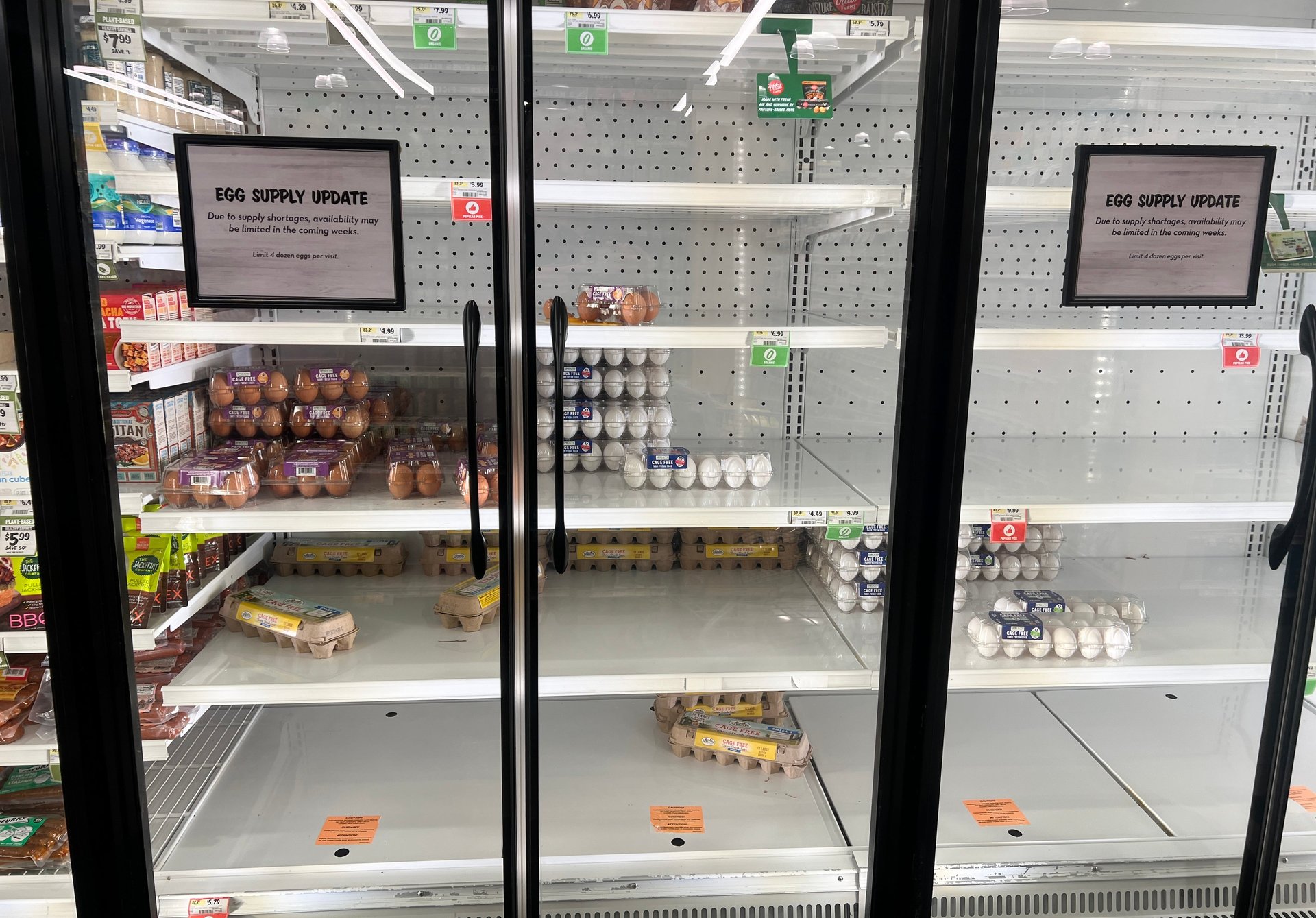Egg prices hit a record high after the biggest jump in almost a decade
The average price of a dozen large, grade A eggs reached $4.95 in January, up more than 96% from a year ago

Egg prices continue to surge, hitting record highs amid shortages driven by bird flu outbreaks and inflation.
Suggested Reading
Egg prices rose 15.2% month over month in January — the highest jump in nearly a decade, according to data released Wednesday by the Bureau of Labor Statistics.
Related Content
More specifically, the price of a dozen large, grade A eggs reached $4.95 in January, up over 96% from a year ago when prices were just $2.52.
The increases come as prices for all consumer goods have gone up faster than expected. The consumer price index (CPI) was up 3% in January from a year ago, the bureau reported. CPI rose 0.5% after rising 0.4% in December, above the 0.3% increase expected by Wall Street, according to estimates compiled by FactSet (FDS).
Egg prices were particularly affected by a spike in bird flu infections, which has led to egg shortages in the nation’s grocery stores.
Trader Joe’s has responded to the supply crunch by issuing a nationwide limit of one dozen eggs per customer per day due to “ongoing issues with the supply of eggs.”
“We hope these limits will help to ensure that as many of our customers who need eggs are able to purchase them when they visit Trader Joe’s,” a company spokesperson told Quartz in an emailed statement.
Several news outlets have also reported that other grocery stores are implementing similar limits. Egg limits have been reported in Kroger (KR), Costco (COST), and Whole Foods (AMZN) locations throughout the U.S.
How is the bird flu causing an egg shortage?
The primary reason for the egg shortage is a shrinking of the nation’s egg-laying hen population due to the ongoing bird flu outbreak.
H5N1 is a type of bird influenza virus that was first detected in 1996 in domestic waterfowl, such as ducks and geese, in Southern China. It is highly contagious among birds. A new outbreak of the virus was first detected in 2020 among wild birds in Europe. This outbreak eventually made its way to the U.S. in 2022.
Since then, over 157 million birds, including commercial poultry, have been infected, according to the U.S. Centers for Disease Control and Prevention (CDC). In just the past 30 days, over 23 million cases among U.S. birds were detected.
When health officials confirm bird flu in a flock, the birds are culled — a euphemism for killed — in order to stop the spread of the virus. A farm in N.Y. recently made headlines after being forced to euthanize 100,000 ducks following a positive test for the virus.
The U.S. Department of Agriculture reported last month that the country’s egg production fell 3% in December, and the population of all egg-laying poultry fell 2% from last year.
